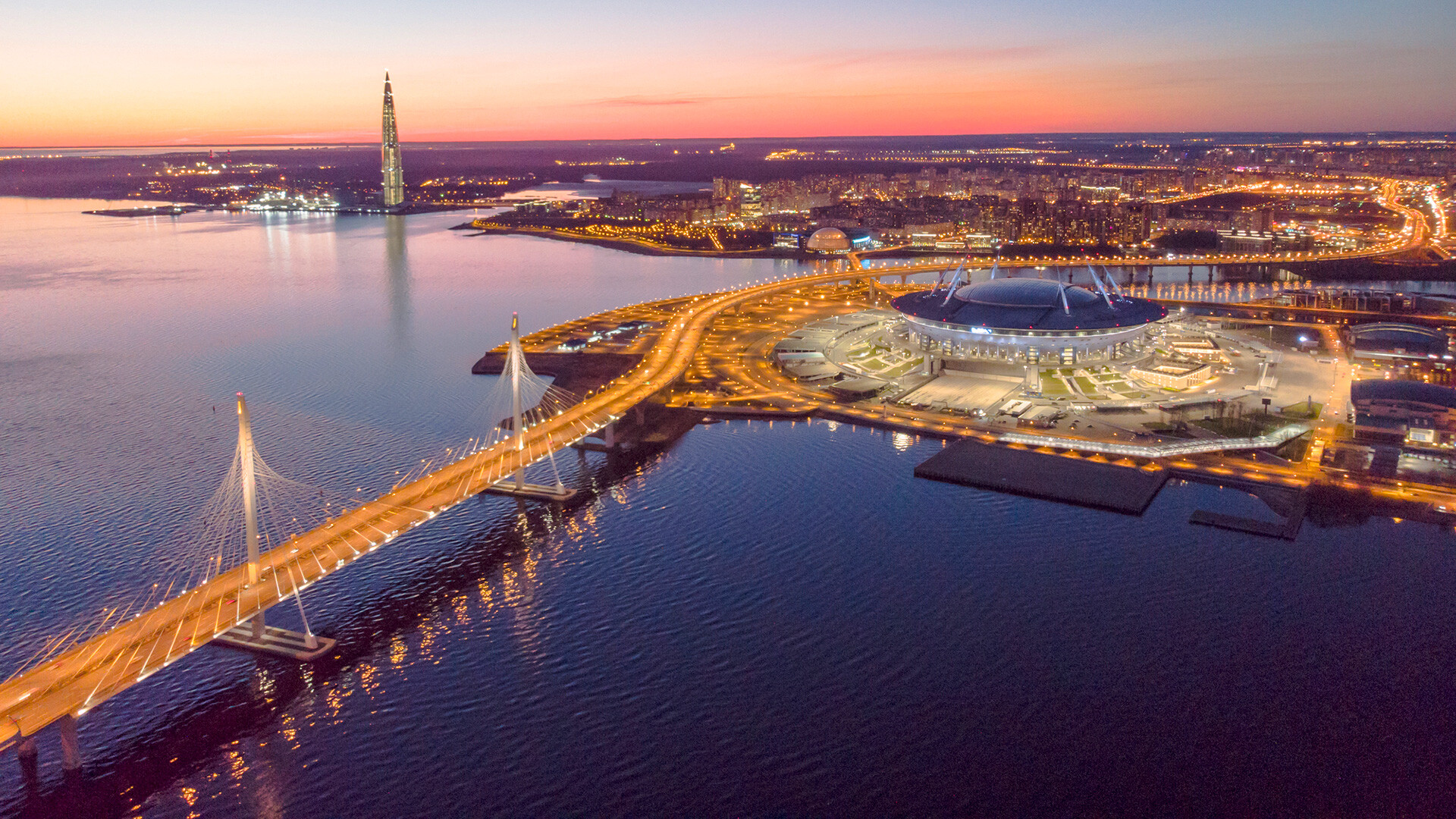
In a sense, almost the entire 300-year history of St. Petersburg has amounted to a duel between man and water. The city was built on marshland, but its unique geographical position allowed it to control the shores of the Gulf of Finland and the Neva estuary, including the river’s branches and channels. Sometimes, the river took revenge and the city had terrible floods.
To divert the river’s channels and to drain the ground, new channels and canals were dug in St. Petersburg in the 18th century. As a result, at the beginning of the 19th century, the city numbered 101 islands. Subsequently, some canals were filled in and smaller islands were merged into bigger ones.
According to the register of geographic names, St. Petersburg has 33 islands today. However, this doesn’t include the Kronstadt archipelago with its various forts. So, in actual fact, there are over 40 islands, altogether.
However, the ones in the city center are not, strictly speaking, perceived as islands: All thanks to the elaborate system of bridges over the rivers and canals. For example, the Blue Bridge in the very center of St. Petersburg reaches 97.3 meters in width and is regarded as part of Saint Isaac’s Square.
Here’s what you need to know about them.

Hare Island is the historic nucleus of the city. It was here that on May 27, 1703, the Peter and Paul Fortress was founded - a date regarded as marking the foundation of the city itself.
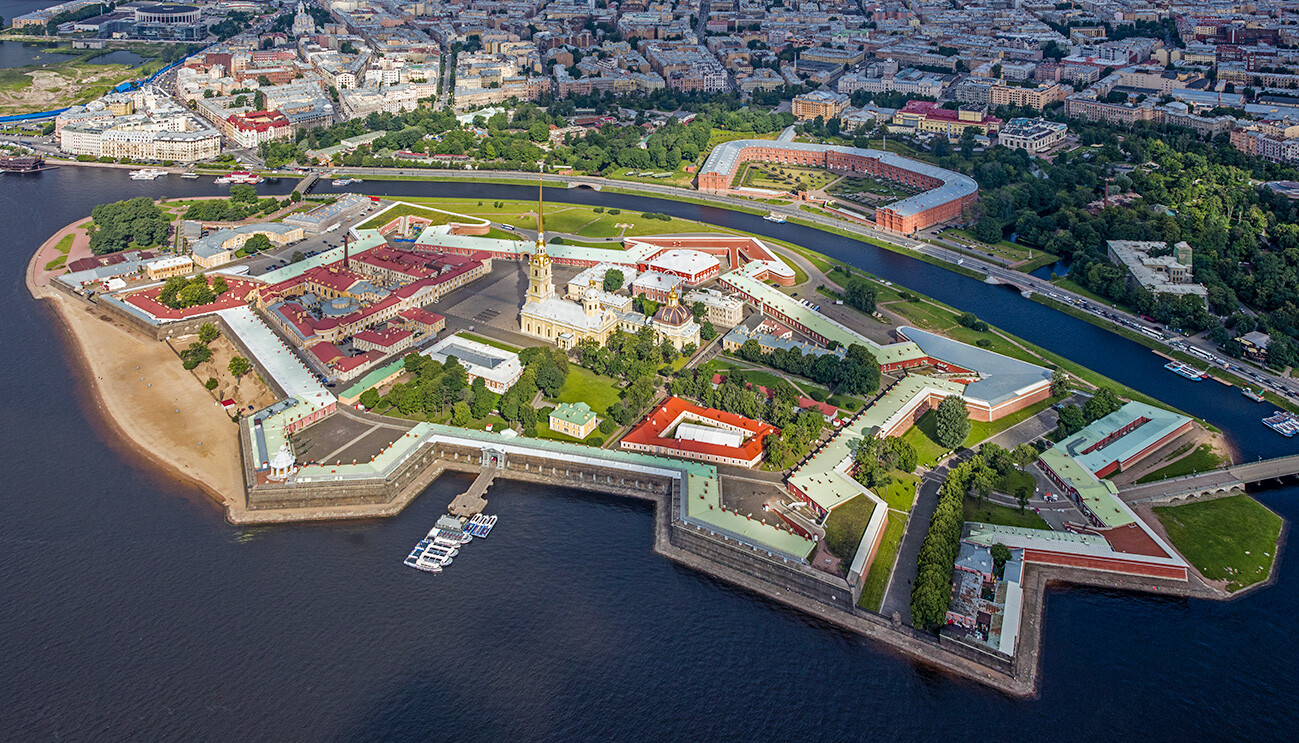
Hare (Zayachy) Island
Andrew Shiva/Wikipedia (CC BY-SA 4.0)The key landmarks of the Imperial era - such as the Mint, the Grand Ducal Burial Vault of the Romanovs and the Trubetskoy Bastion Prison (Russia’s main political prison) - are all located there.
Vasilyevsky Island can be described as the most renowned - countless literary works have been devoted to it. Under the name of Vasilyev, the island featured in a Novgorod land register as early as the year 1500 and, today, local residents lovingly call it ‘Vaska’.
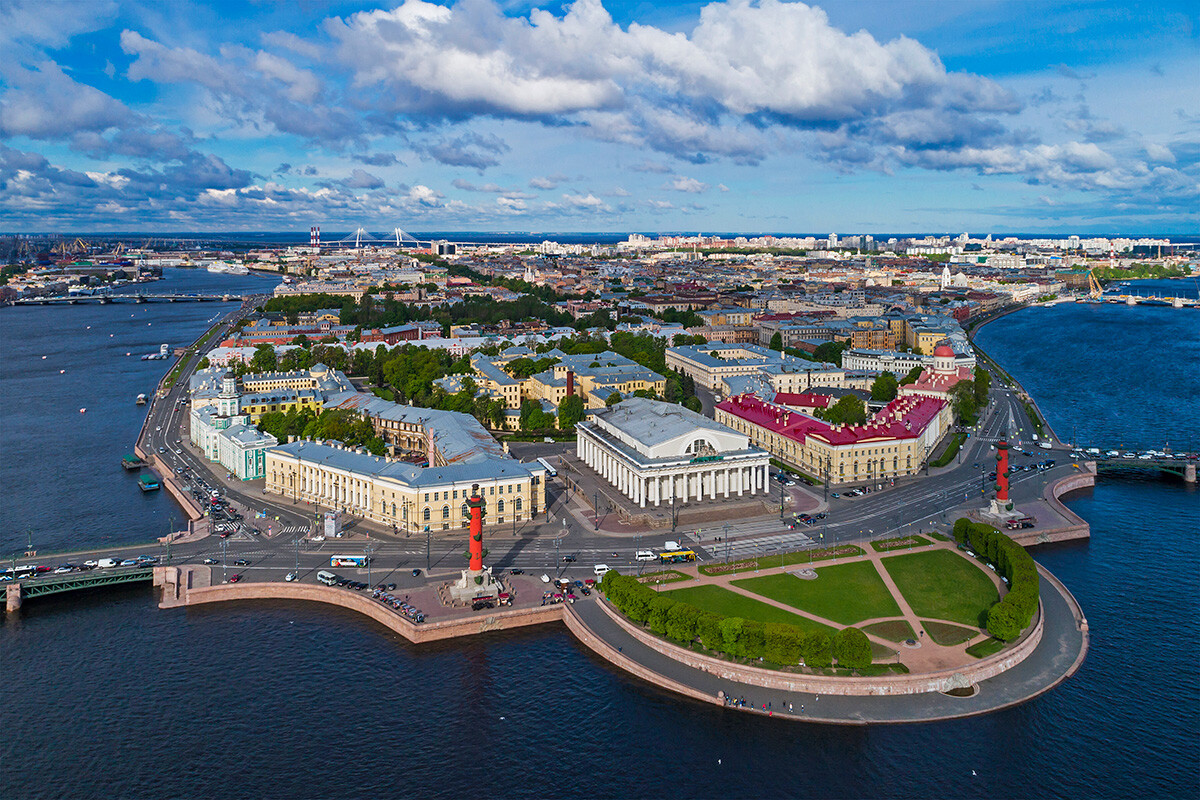
Vasilyevsky Island
A.Savin, WikiCommonsThe island’s easternmost tip, Strelka - easily recognizable by its two rostral columns - is adjacent to the historic center of St. Petersburg. During major city festivals, the columns revert to their historical function of serving as lighthouses.
The largest island of the Neva estuary occupies an area of 16.2 sq. km. By one of the ironies of history, it is called ‘Bezymyanny’ (‘Nameless’). It is linked to other islands and the mainland part of the city by as many as 47 bridges.
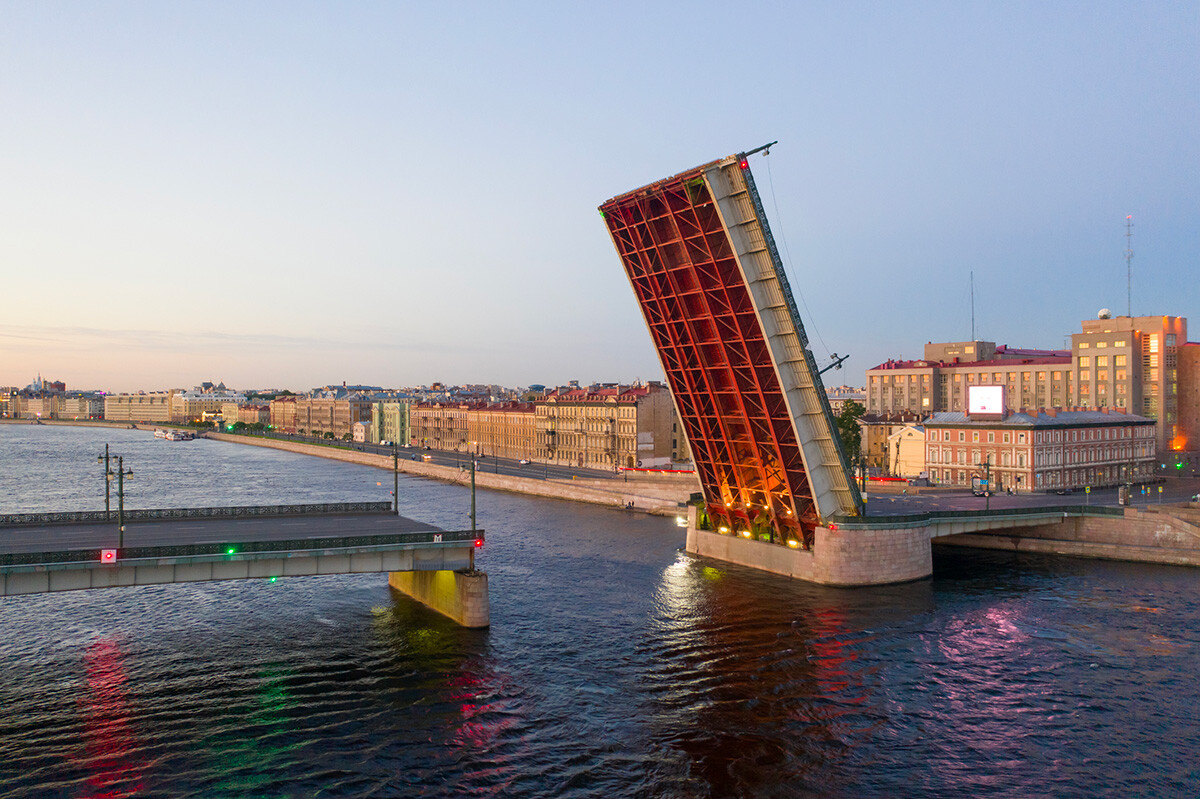
Liteyny Bridge over Neva to ‘Bezymyanny’ (‘Nameless’) Island
Legion MediaIt was formed after the Obvodny Canal was built, the first stage of which was dug in 1769-1780. It is the largest canal in St. Petersburg: up to 42 m wide and 8 km long.
The area of the tiniest island - Serny (Sulfur) - is just 0.03 sq. km and only one bridge leads to it.
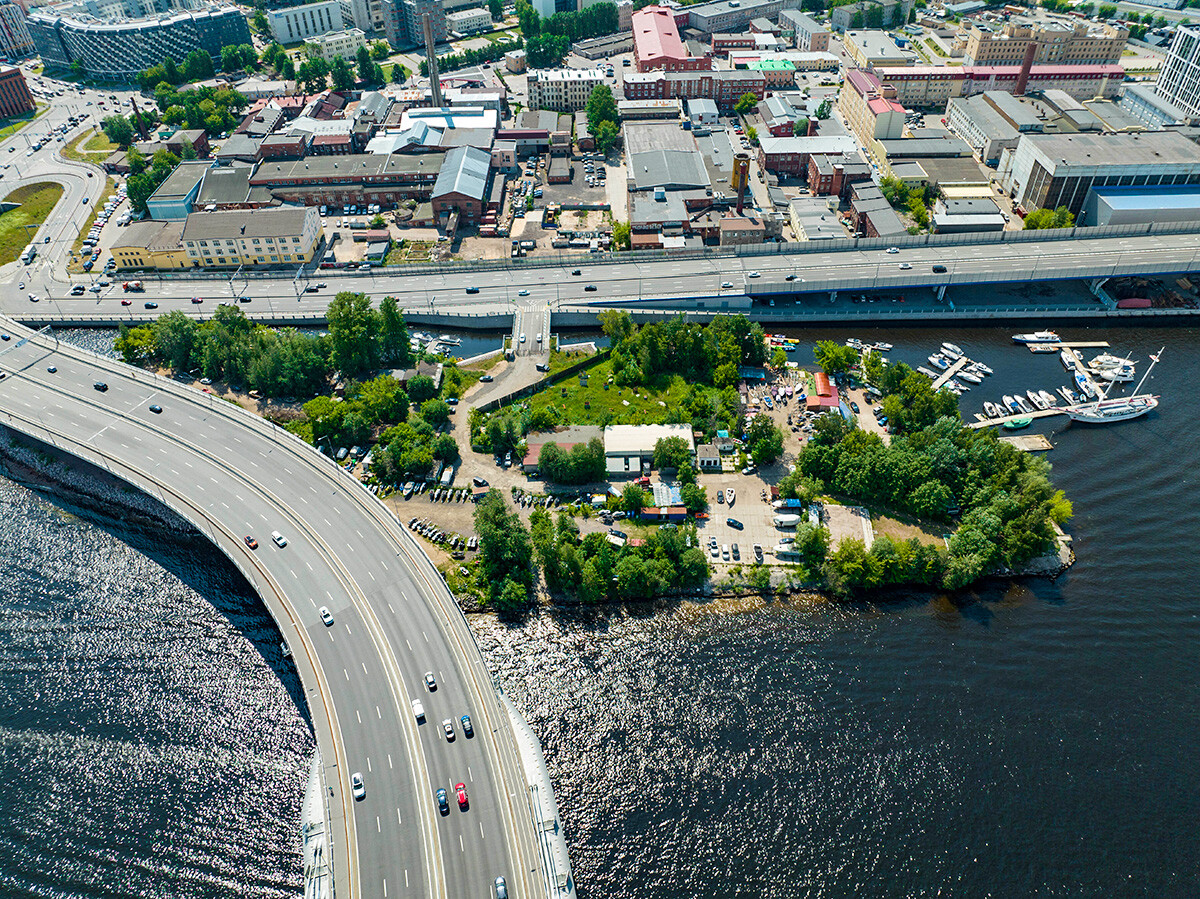
Serny (Sulfur) Island
Nikolay Bulykin (CC BY-SA 4.0)The island got its name in the 19th century, because of its intended purpose - warehouses for storing sulfur were located on it.
As many as two islands could compete for this title in our rating - Summer Garden Island and Yelagin Island.
The Summer Garden is in the historic part of the city and its whole area (0.12 sq. km) is covered by a lavish park and garden complex with pavilions, fountains, green mazes and copies of sculptures by Italian masters of the late 17th and early 18th centuries. The garden was created as a royal summer residence for Peter the Great: In 1710-1714, a palace was built here in which the tsar lived every summer until the end of his life.
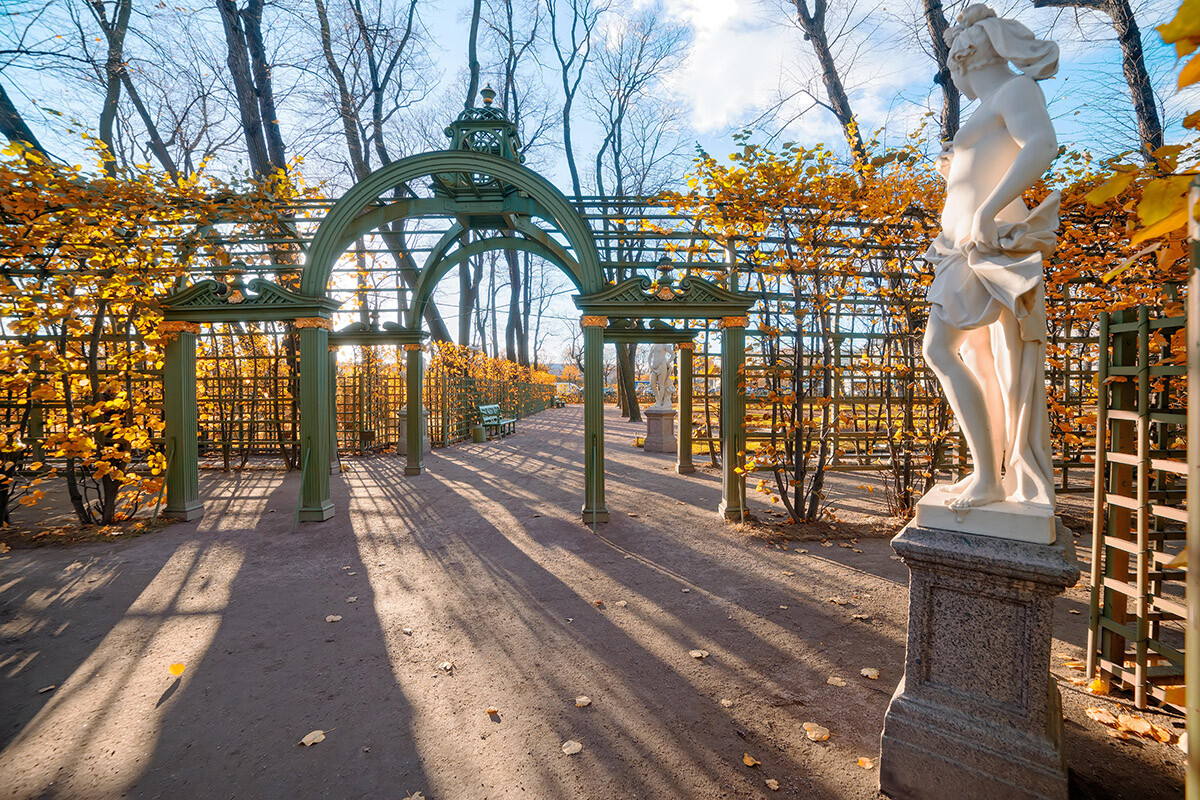
The Summer Garden is surrounded by the water
Legion MediaYelagin Island is significantly larger than the Summer Garden, but it, too, is a former Imperial residence. Its first owner was Dowager Empress Maria Feodorovna (spouse of Paul I, great-grandson of Peter the Great). Italian architect Carlo Rossi, then little known in St. Petersburg, worked on the layout and landscape design of Yelagin Island: The Yelagin Palace on the island, which he rebuilt, was his first major work in the Russian capital.
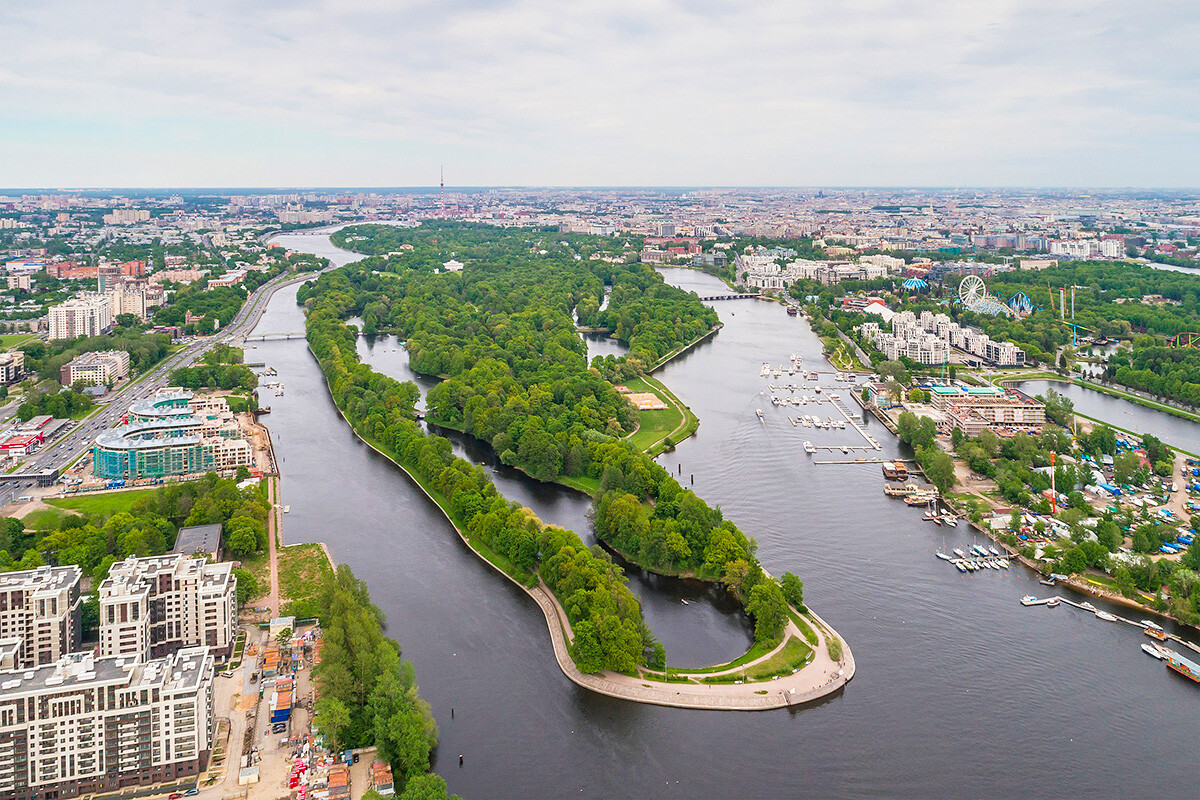
Yelagin Island's park
A.Savin, WikiCommonsIn 1932, the Central Park of Culture and Leisure was opened on the island. Sports facilities, playgrounds, amusement rides and sculptural compositions on sporting themes appeared there. During World War II, Yelagin Island was badly damaged. Essentially the reconstruction of its historical aspect went on for almost half a century as circumstances permitted, but was particularly ramped up at the turn of the 20th and 21st centuries. Therefore, today, we are closer than ever to appreciating the Rossi design.
New Holland Island is a seamless combination of the romance of industrial architecture with a contemporary urban space (strictly speaking, it’s two islands joined together). The “Holland” part of the name is a reminder of the time when Peter the Great was building his Northern Fleet on the banks of the Neva and invited Dutch shipbuilders to the capital to assist in the undertaking.

New Holland Island
A.Savin, WikiCommonsThe islands, which were located next to the shipyards, were used by the Admiralty and were home to warehouses for storing shipbuilding timber. A naval prison building was put up on New Holland Island in the mid-19th century. It was nicknamed ‘The Bottle’, which became the origin of the Russian phrase: “Ne lez v butylku” (literally: “Don’t clamber into the bottle”, i.e. “don’t get annoyed over trifles”). In the second decade of the 21st century, this monument of industrial architecture was turned into a fashionable public space with restaurants, lecture pavilions, a stage and a landscaped garden.
By tradition, this title is held by Krestovsky Island. St. Petersburg’s biggest football stadium is located there (along with several smaller stadiums), as well as a sports complex, a cycling track, an indoor athletics track and a rowing club. A large part of the island is taken up by the Maritime Victory Park, a popular location for rollerbladers, cyclists and recreational runners, which also includes an amusement park.
The island’s sporting history dates back to the mid-19th century. The Neva Yacht Club was established here in 1859; the St. Petersburg Rowing Association in 1889; and the Lawn Tennis Club in 1894.

Huge Zenit Arena and other stadiums at the Krestovsky Island
Legion MediaIt is worth going to Krestovsky to see the home stadium of the Zenit football club - the so-called ‘Gazprom Arena’. It is the work of Japanese architect Kisho Kurokawa and has a retractable roof (the project was dubbed ‘The Spaceship’). Euro 2020 and 2018 World Cup matches were played there. A Metro station was opened next to the stadium for the latter event, which is now called ‘Zenit’. The stadium can fit almost 65,000 spectators for sporting events and up to 80,000 for theatrical performances and concerts. The arena was erected on the site of another huge 20th century sporting venue - the Kirov Stadium, which was regarded as one of the biggest in the world: In the years 1950-1978, prior to its first revamp, it held up to 100,000 spectators.
Kotlin Island, where the fortress city of Kronstadt is located, stands aloof from the islands of the Neva estuary. Kotlin is linked to the mainland by a system of structures that protect St. Petersburg from flooding. It consists of 11 dams with a total length of 23.4 km. They took over 30 years to build and were completed in 2011. Through traffic for vehicles along the dam was opened then.

Kotlin Island with the fortified city of Kronstadt
Serguei Fomine/Global Look PressNumerous forts are located around Kotlin, with the biggest concentration in the inner stretch of water. These structures defended the city from attack by sea. One of them, the Alexander I Fort, stopped being a defensive structure in the late 19th century and became the site of a bacteriological laboratory for the production of anti-plague serum.
Dear readers,
Our website and social media accounts are under threat of being restricted or banned, due to the current circumstances. So, to keep up with our latest content, simply do the following:
If using any of Russia Beyond's content, partly or in full, always provide an active hyperlink to the original material.
Subscribe
to our newsletter!
Get the week's best stories straight to your inbox